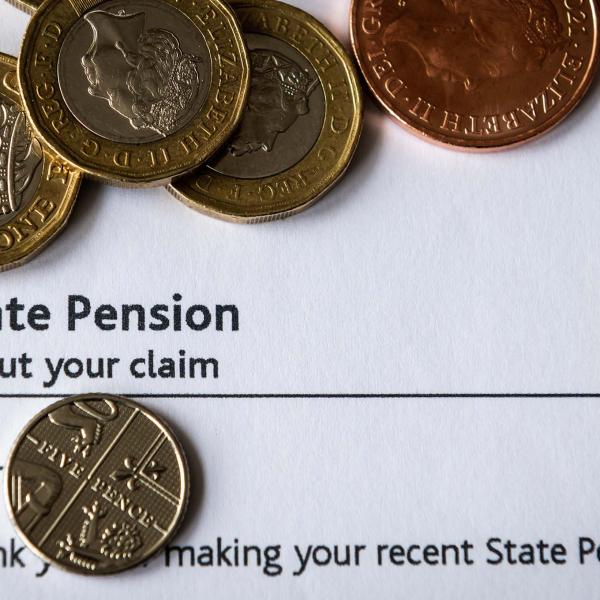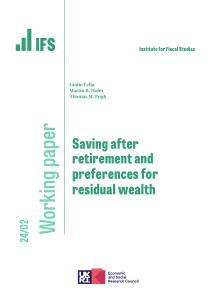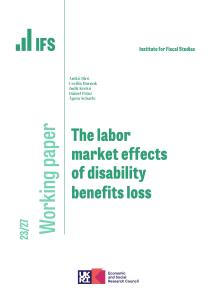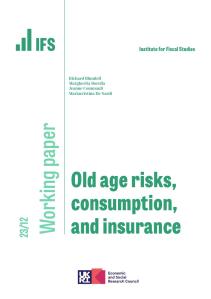Authors

Deputy Director
Carl, a Deputy Director, is an editor of the IFS Green Budget, is expert on the UK pension system and sits on the Social Security Advisory Committee.

Research Associate University of Bologna
Matthew is Associate Professor at the University of Bologna focusing on consumption and savings choices and how policy affects them.

Research Associate University of Sussex
Richard is an IFS Research Associate, a Part-time Professor of Economics at the University of Sussex and a Visiting Professor of Economics at UCL.
Journal article details
- Publisher
- University of Toronto Press
- Issue
- November 2008
Suggested citation
R, Disney and C, Emmerson and M, Wakefield. (2008). 'Pension provision and retirement saving: lessons from the United Kingdom' (2008)
More from IFS
Understand this issue

Retirement is not always a choice that workers can afford to make
6 November 2023

The future of the state pension
21 December 2023

Pensions are far from broken but could still use a fix
18 December 2023
Policy analysis

The future of the state pension
13 December 2023

Recent trends in and the outlook for health-related benefits
19 April 2024

4.2 million working-age people now claiming health-related benefits, could rise by 30% by the end of the decade
19 April 2024
Academic research

Saving after retirement and preferences for residual wealth
18 January 2024

The labor market effects of disability benefit loss
29 September 2023

Old age risks, consumption, and insurance
21 March 2023